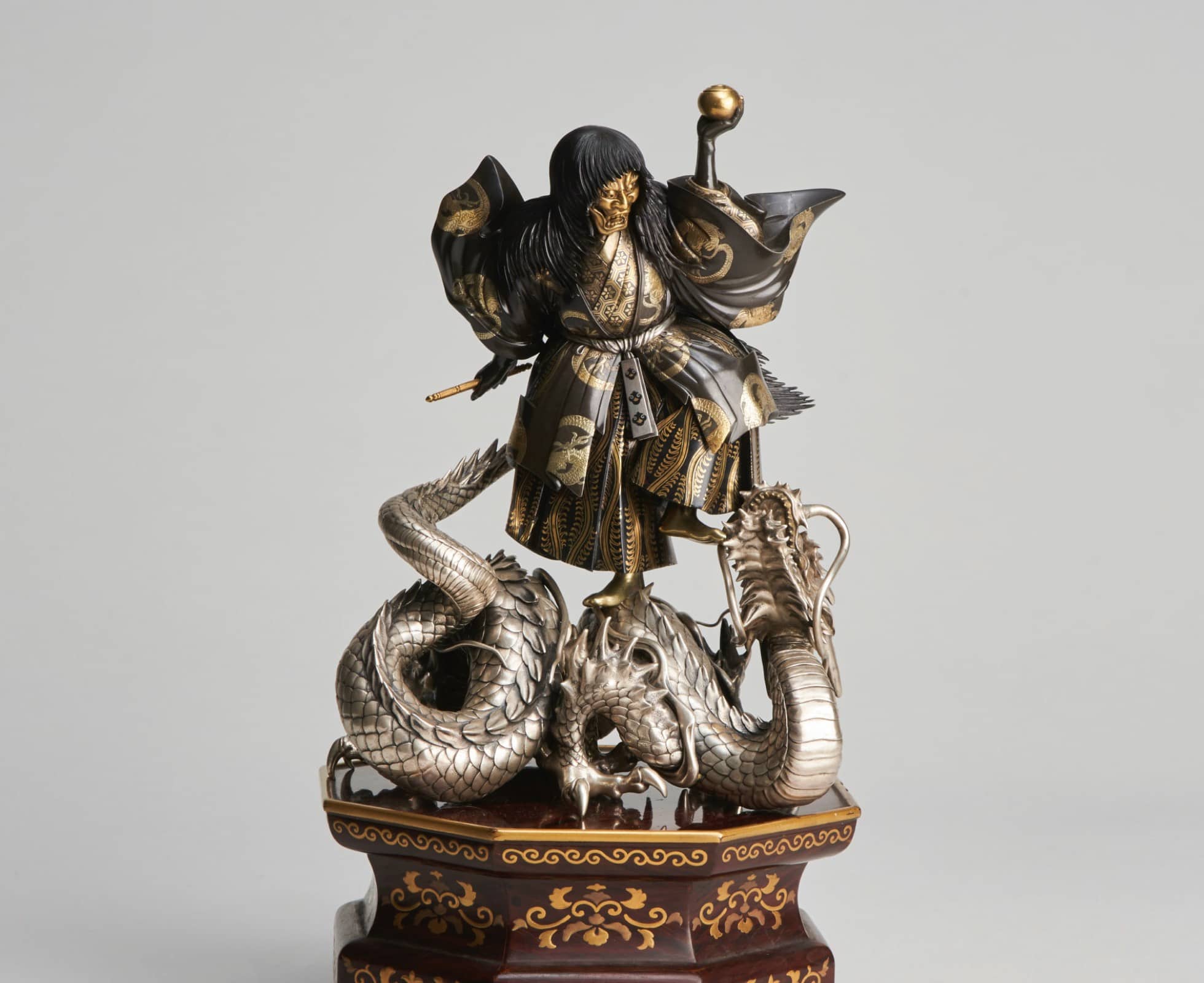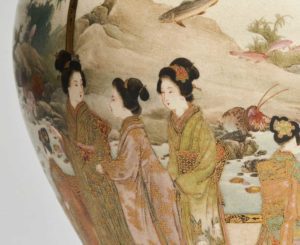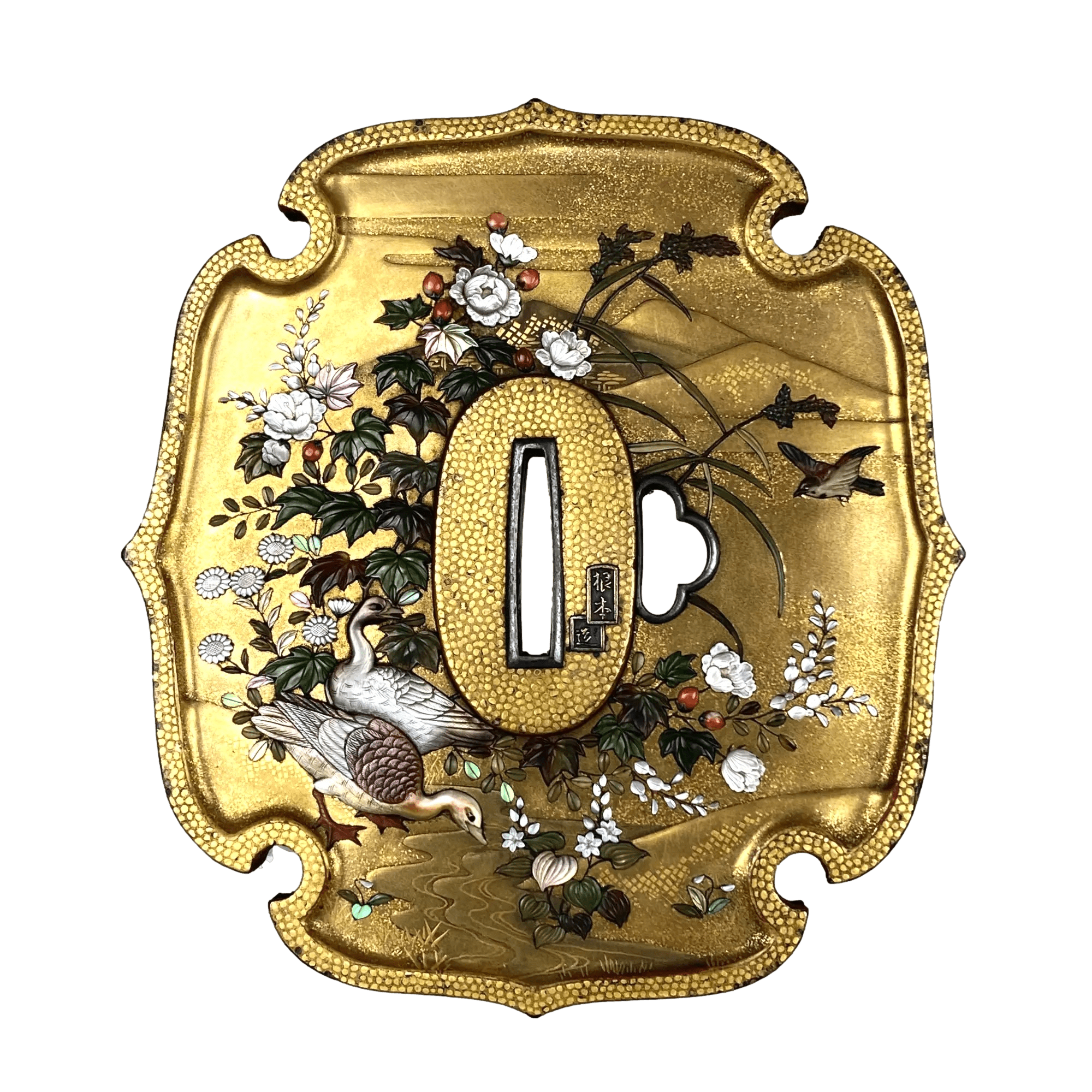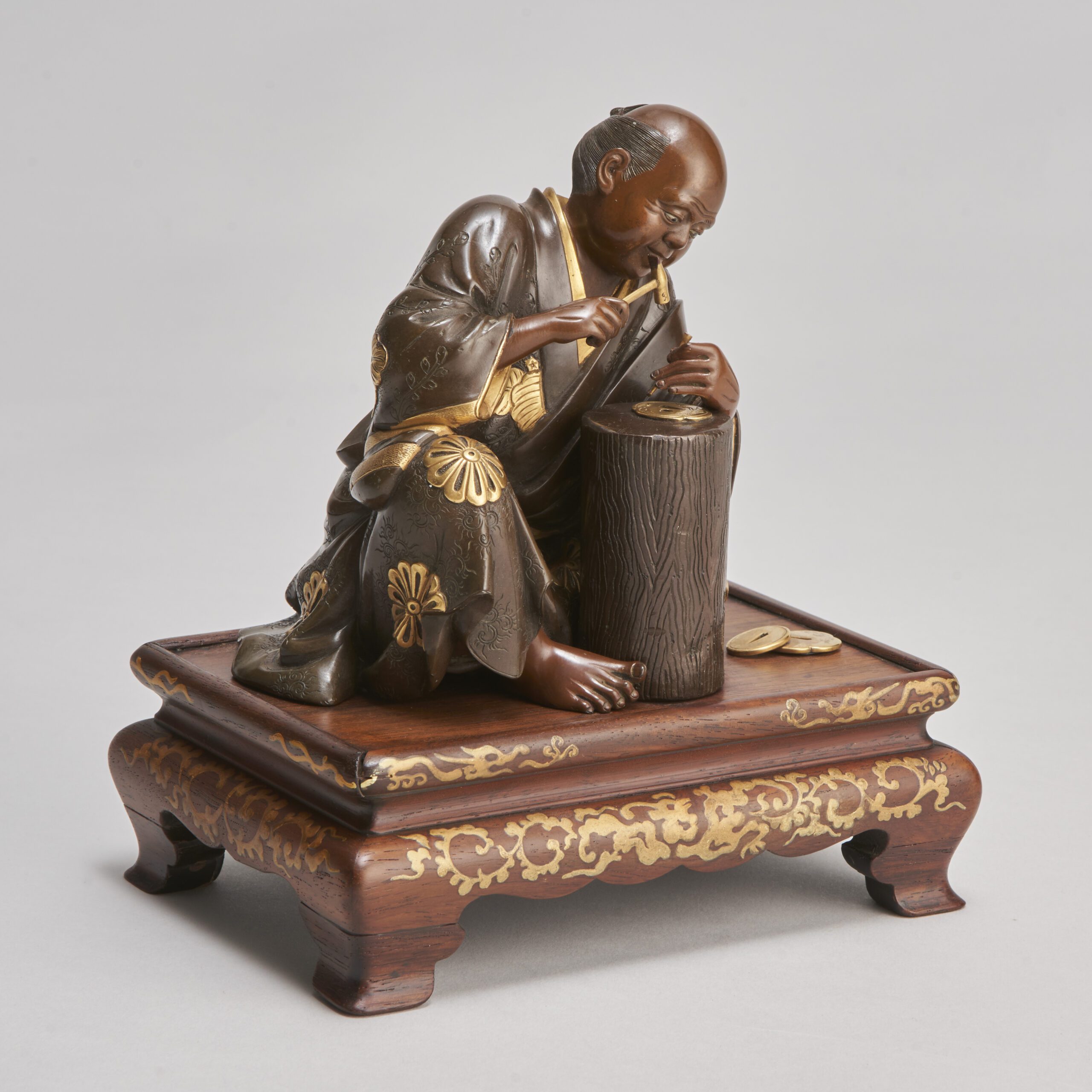In its simplest form, the Tsuba is the hand guard on a Japanese Sword. It provides balance and protects the owners hand from slipping onto the blade. However, Tsuba are much, much more than just a functional part of a sword. Just as the Netsuke has evolved from being a practical part of Japanese dress, to becoming a desirable treasure among collectors of Oriental Art, Tsuba have become highly collectible works of art in their own right.
A decorative wood Tsuba on a Wakizashi from our collection of Meiji works of art
Japanese Swords are famously highly customisable. Samurai warriors would have owned a collection of different fittings that that they would alternate throughout the year in order to personalise their swords. As a result, there was a lively and lucrative trade in Sword parts in Japan and the Tsuba was one of the most popular items. Elaborately cast and decorated Tsuba would tell stories of Old Japan, reflect status and of course, convey loyalties.
The majority of Tsuba are disk-shaped and elliptical in form. Another common shape made of four elegant lobes is the Mokko and in later, (mostly decorative) pieces, the shape of Tsuba could be completely transformed as style took over from function.
Tsuba with elaborate cut-outs or piercing are known as Sukashi Tsuba and feature either positive or negative silhouettes to further enhance their designs. They are some of the most beautiful, if not the most functional pieces of hardware.
A Bronze Tsuba with Spider decoration
The oldest surviving examples of Tsuba date back to the 5th Century. Due to the many centuries of constant war between rival clans, the Emperor and Shogunate, weapons from these eras were generally long-lasting and above all functional. Early examples were mostly made of hardwearing materials such as Iron and Steel and they were simple in design with minimal decoration. They would maybe include a “Mon” (emblem) that would represent the clan or retainer that the owner would be fighting for.
Then, during the relatively peaceful Edo Period (1603 – 1868) there was more time to devote to the creation of art and Tsuba started to become more ornamental with precious metal inlay and applied designs featuring. The Tsuba would often portray stories and legends of great heroes from the past and were adorned with symbolic features and Mon. They became heirlooms and an important historical document and would be passed down through the generations.
A Bronze and multi-metal Tsuba with Lion Dog design
The Meiji-era (1868 – 1912) famously saw the abolishment of the Samurai and with it, the banning of wearing Swords in public. In order to survive, the armorers and weaponsmiths of late 19th Century Japan had to diversify with many abandoning the trade and turning their hands to other crafts. Some makers persisted though, finding a new market in the newly arriving Western traders and travellers who were themselves fascinated by the legend of the Samurai.
An Okimono of a Tsuba maker by the Miyao Company
The Tsuba from this time tend to be some of the most lavish of all. They were often made of materials entirely unsuitable for practical use in battle, such as Gold lacquer with onlaid Shibayama decoration or fragile enamel work (Cloisonne). These Tsuba were never made to be used as sword handles but instead they were a show of the skill and imagination of the artist and were worn as a display of status.
A Meiji-era Gold lacquer Tsuba with Shibayama decoration
These days, when people think of Japan, the Samurai is often one of the first things that come to mind. They may no longer exist but their legend and influence continues to filter down through Japanese culture. “Tsubazeriai” (meaning to be in fierce competition with each other) is a fighting manoevre, where two participants would lock their Katana together at the point of the Tsuba and push, in order to gain a better position to strike the other down. This is still seen in the modern sport of Kendo.
Another wonderful Gold lacquer and Shibayama Tsuba from the Meiji Golden Age of creativity
Not all budding collectors of Japanese art have the budget or space to own Samurai swords or other weaponry, but genuine antique Tsuba can start from very reasonable prices and are easy to transport, care for and display. Tsuba really are a very accessible way of owning a piece of bona-fide Samurai history.
An Okimono figure of a Tsuba maker by the Miyao Company
We hope you enjoyed this short-read blog about Tsuba. You can see our article on Samurai Armoury by clicking here and you can scroll through all our “Stories behind the Art” blogs by visiting our News and Blog page.












